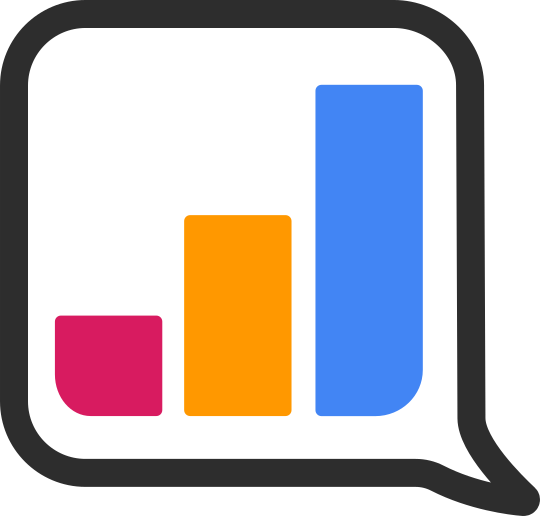First time to OnlyFacts? Start here. If you find climate data overwhelming, make sure you’re signed up for our free weekly briefing and our social channels, where we’re constantly breaking things down and sending updates straight to your feed.
Need To Know
- Energy production is the world's largest source of greenhouse gas emissions. Burning fossil fuels for energy accounts for about 79% of total emissions globally and in Australia.
- Energy is a broad term covering electricity, transport, and stationary energy. Stationary energy refers to fuel burned outside transport, such as in power plants and buildings—heating is a major factor.
- OnlyFacts' energy section focuses on Australia's largest emitting sector—electricity—which accounts for 35% of emissions and is transitioning to lower-carbon sources.
What OnlyFacts Covers
We cover electricity data through two lenses:
- As a sub-topic within Emissions (focused on electricity-related emissions, including emissions intensity of each fuel).
- As a major topic on its own (covering fuels powering electricity grids, the renewables vs. fossil fuels mix, and local-level installations).
How to Read the Data
Key Concepts
- Energy Generation vs. Consumption: Energy data is often split into generation and consumption:
- Generation = How much energy is produced
- Consumption = How much energy is used
- 📌 Because the data for generation and consumption are nearly identical, OnlyFacts only displays one. We generally use consumption. I.e. Demand.
- Electricity Markets:
- Australia uses a patchwork of electricity markets and transmission networks to trade and transport electricity between different regions.
- Getting a national view of Australia's electricity data means stitching this patchwork together.
- Currently, the data on OnlyFacts only represents the National Electricity Market (NEM), which covers every state and territory except for WA and NT.
Key Terminology
- GW v GWh
- Gigawatt (GW): A measure of instantaneous power.
- Gigawatt-hour (GWh): A measure of energy used or generated over time.
- Together, power and energy describe the capacity of electricity systems and their ability to meet demand. 👉 To learn more, read our guide to energy measurements.
- Energy Installation 'units'
- We track installations of 'units' of solar PV, solar water heater and air source heat pump.
- 'Unit' refers to a complete system installed at a home or business.
Main Energy Dashboard
The Energy dashboard shows:
- Yesterday’s fuel mix – which fuels powered the NEM.
- Renewables vs. fossil fuels – the overall grid mix.
- State renewables usage – how each state used renewables (NEM states only).
- Interstate Energy Trade – which states imported/exported energy.
📍 Tip: Use the geolocation dropdown (top right) to switch to state or territory dashboards.
Fuels Dashboard
The Fuel dashboard shows:
- The data and trends for every major fuel source in the NEM: black coal, brown coal, gas, solar, wind, hydro and biomass.
📍 Use the geolocation dropdown (top right) to switch to state or territory dashboards.
Renewables Dashboard
The Renewables dashboard shows:
- Renewables in the Grid - how renewable fuels are contributing to electricity demands.
- Target Tracker - Progress against targets.
- Capacity Building - Renewables capacity in Australia and worldwide.
Solar Dashboard
The Solar dashboard shows:
- Solar in the Grid – how solar is contributing to electricity demands.
- Utility Solar Power – large-scale solar farms feeding the grid.
- Rooftop Solar Power – small-scale solar on homes and businesses.
- Rooftop Solar Installations – monthly data on new solar panel installs.
- Water Heater Installations – monthly data on new solar water heaters.
👇 Click a state, LGA, or postcode name in the installations tables for detailed data history.
Installations Dashboard
The Installations dashboard shows a deep dive on solar installations by local area
Imports & Exports Dashboards
Australia’s National Electricity Market (NEM) lets states trade electricity based on supply and demand. The Imports and Exports dashboard shows:
- Interstate trade - Which states export or import energy.
Data Sources & Updates
- NEM Fuel Mix – Open Electricity (updated daily)
- Renewables Capacity – IRENA (updated annually)
- Solar Installations – Clean Energy Regulator (updated monthly)
Get Started: Explore Transport Data
Step 1: View the Main Energy Dashboard
- Go to the Energy Dashboard
- You'll see the small picture (yesterday’s fuel mix) and the big picture ( renewables v fossil fuels)
- Use the geo dropdown to explore state-level data.
Step 2: Explore Renewable
- Go to the Renewables Dashboard
- You'll see progress of renewables against targets
- Scroll to ‘Renewables Capacity – Worldwide’ and click ‘All Countries’ for a global view.
Step 3: Find Local Solar Installations
- Go to the Installations Dashboard
- You'll see rooftop solar and water heater installations by state, LGA, and postcode.
- Click any state, LGA or postcode for a detailed data history.
- Click the ‘All LGAs’ or ‘ All postcodes’ buttons for full lists
Explore the Energy dashboard now.

